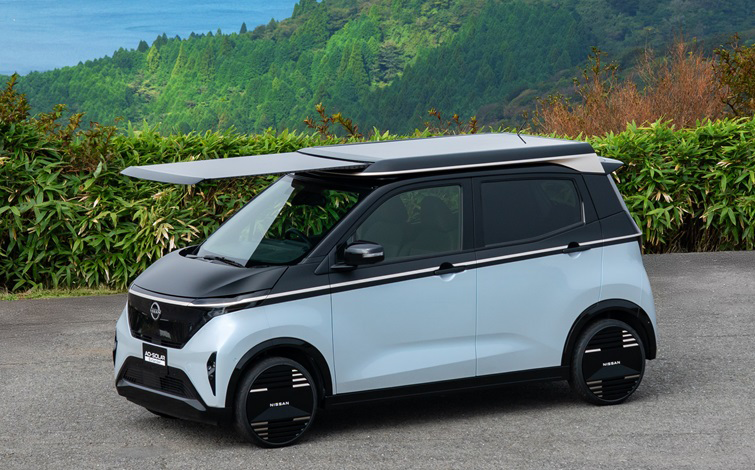Commuting to work or school alone in heavy and inefficient vehicles is one of the biggest transportation problems we have. It just doesn’t make sense.
However, it’s not always people’s fault, sometimes they have no alternative.
Between 2009 and 2011, automakers seemed determined to fix this problem and presented some solutions. Back then concepts of ultra efficient electric vehicles were common at auto shows. They were light and most had tandem seats to improve aerodynamics.
Unfortunately all of those projects were buried and now automakers seem to forget that the problem remains…
In this article we’ll see some concepts of ultra efficient electric vehicles that had great potential to change the way we move in and between cities. We’ll start with my favorite.
Opel Rak-e
The Opel RAK-e premiered at the 64th Frankfurt Motor Show in September 2011. It looked like a fighter jet and it was my favorite concept. I liked the Opel RAK-e so much that in 2013, tired of waiting I created a facebook page asking Opel to start selling it…
Advertised specs
- Seats: 2 (tandem)
- Battery: 5 kWh
- Range: 100 km
- Motor: 10,5 kW (36,5 kW peak)
- Top speed: 120 km/h
- Length: 3.000 mm
- Height: 1.190 mm
- Weight: 380 kg
Volkswagen Nils
The Volkswagen Nils also premiered at the 64th Frankfurt Motor Show in September 2011. This concept was the one that looked more ready to go into production phase. I just disliked it having only one seat, two tandem seats is the correct formula for this type of vehicles.
Advertised specs
- Seats: 1
- Battery: 5,3 kWh
- Range: 65 km
- Motor: 15 kW (25 kW peak)
- Top speed: 130 km/h
- Length: 3.040 mm
- Width: 1.380 mm
- Height: 1.200 mm
- Weight: 460 kg
Audi Urban Concept
You might have guessed, the Audi Urban Concept also premiered at the 64th Frankfurt Motor Show in September 2011. Put larger tires on this one and it would almost look like an off-road buggy that came from Mad Max. Extremely cool!
Advertised specs
- Seats: 2 (tandem)
- Battery: 7,1 kWh
- Range: 73 km
- Motor: 15 kW (2 motors)
- Top speed: 100 km/h
- Length: 3.219 mm
- Width: 1.678 mm
- Height: 1.189 mm
- Weight: 480 kg
Nissan Land Glider

The Nissan Land Glider is a concept electric car from Nissan that was presented in October 2009 at the 41st Tokyo Motor Show. It had two electric motors but specs were never mentioned.
While having an unique “tilt” setup, it employs a special leaning function that holds occupants firmly in place even when the vehicle is cornering at extremely tight angles.
Veeco RT
Man I really wanted this one to succeed. In 2012 the Portuguese EV community was extremely excited with this electric vehicle.
The Veeco RT had the mission to become the first electric super efficient reverse trike made in Portugal. It was set to go on sale in 2013, unfortunately it was postponed time after time and never made it to the production phase.
Advertised specs
- Seats: 2
- Battery: LiFePO4 16 kWh (48 kWh optional)
- Range: 200 km (more than 400 km with optional battery)
- Motor: 30 kW (80 kW peak)
- Top speed: 160 km/h
- Weight: 800 kg (with standard battery)
The reality
Instead of all of these cool concepts the closest thing we ever got was the toy car Renault Twizy attached to a battery rental in 2012…
Don’t get me wrong, this quadricycle is extremely fun to drive and perfectly fine to use in the summer, but we can’t use it all year long in comfort.

Advertised specs
- Seats: 2 (tandem)
- Battery: 6,1 kWh
- Range: 100 km
- Motor: 13 kW
- Top speed: 80 km/h
- Length: 2.303 mm
- Width: 1.132 mm
- Height: 1.476 mm
- Weight: 473 kg
The present
Right now the best thing we can hope for from a major automaker is the SEAT Minimó that just seems an improved second generation Renault Twizy. SEAT says that this electric vehicle is aimed at car-sharing services, but private buyers are not excluded. Production starts in 2021.
Advertised specs
- Seats: 2 (tandem)
- Battery: 9,6 kWh
- Range: 100 km
- Motor: 20 kW (2 motors)
- Top speed: 90 km/h
- Length: 2.500 mm
- Width: 1.240 mm
- Height: 1.189 mm
- Weight: 450 kg
Considering that this electric vehicle is aesthetically very similar to the Renault Twizy, but better in all fronts, I wonder what Renault plans to do. Fight back with a new generation Twizy or completely kill the project?!
Summing up.
Affordable ultra efficient electric vehicles would address one of the biggest transportation problems we face today, that is inefficient commuting. While I think that more and better public electric transportation is what we collectively should aim for, regarding private transportation ultra efficient electric vehicles could play an important role and become a no-brainer for a lot of commuters (old and new). Moreover, this type of vehicle would help automakers with young people.
Younger generations are more worried about the environment and when they are looking for their first car they don’t want to buy ICE (Internal Combustion Engine) cars, but they also can’t afford current electric cars that cost a lot more than 10.000 euros.
Without the need of big batteries to have decent range these ultra efficient electric vehicles would be extremely affordable. They could be available with two battery packs, one optimized for cost made with cobalt-free LFMP battery cells and other optimized for range with more energy-dense NCMA battery cells.
I would definitely love to see these battery packs in the concepts we saw previously.
LFMP battery
- Capacity: 20 kWh
- Range: 300 km (186 miles)
- Cost: 1.600 euros
NCMA battery
- Capacity: 30 kWh
- Range: 450 km (279 miles)
- Cost: 3.000 euros
Anyway, do I have confidence that automakers with finally sell ultra efficient electric vehicles anytime soon? Hell no, this is the industry that convince us that we need big and inefficient SUVs to drive around the city… They have strong ties with the oil industry, moreover they don’t need to be smart to survive since they are too big to fail, governments will always bail them out when they screw up…
What do you think? Would you be interested in one of these vehicles? What’s your favorite concept?

